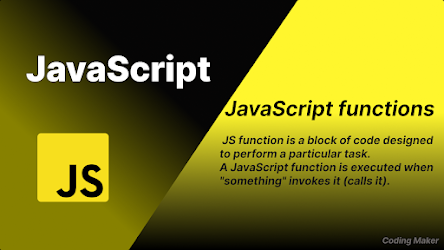JavaScript Functions
JavaScript functions are essential building blocks of any web application or website. They are reusable blocks of code that perform specific tasks when called upon. Functions play a crucial role in JavaScript, as they allow you to organize your code, make it more modular, and reduce redundancy. Here, we'll explore what JavaScript functions are, how they work, and provide an example to illustrate their usage.
What Does a JavaScript Function Work For?
JavaScript functions serve various purposes, including:
- Code Reusability: You can define a function once and use it multiple times throughout your codebase, reducing redundancy and making maintenance easier.
- Modularity: Functions allow you to break down complex tasks into smaller, manageable chunks. This improves code readability and makes it easier to collaborate with other developers.
- Encapsulation: Functions create a scope for variables, preventing them from polluting the global scope. This helps avoid naming conflicts and ensures data integrity.
- Abstraction: Functions can abstract away implementation details, making code more high-level and easier to understand.
- Event Handling: Functions are commonly used to handle events in web applications, such as button clicks, mouse movements, and keyboard interactions.
Let's create a simple JavaScript function that calculates the factorial of a given number. The factorial of a number is the product of all positive integers from 1 to that number. We'll define a function called `calculateFactorial` and then call it with different numbers.
Explanation of the Code:
- We define a function called `calculateFactorial` that takes one parameter `n`, which represents the number for which we want to calculate the factorial.
- Inside the function, we use a recursive approach to calculate the factorial. If `n` is 0 or 1, we return 1 (base case). Otherwise, we multiply `n` by the factorial of `n-1`.
- We then call the `calculateFactorial` function with two different numbers (`num1` and `num2`) and store the results in `factorial1` and `factorial2`.
- Finally, we log the results to the console, displaying the factorial of each input number.
This example demonstrates how JavaScript functions can be used to encapsulate logic and make code more modular and reusable. Functions are a fundamental concept in JS & are used extensively in Web Development.


Comments
Post a Comment